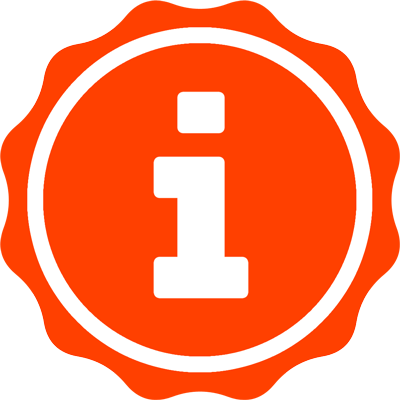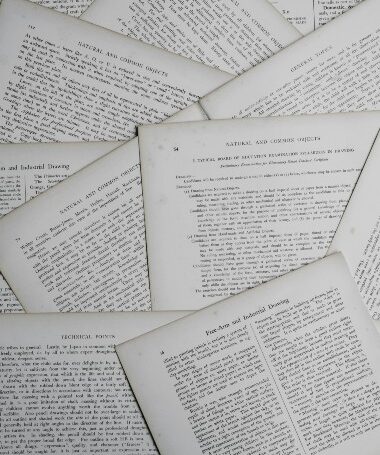 Career
Career Staying Up-to-Date on Your Articles’ Impact

This piece by Stacy Konkiel originally appeared on the Impactstory blog and is reposted under the Creative Commons Attribution 4.0 License. Impactstory is an open-source, web-based tool that helps scientists explore and share the diverse impacts of all their research products.
This is the first of two “ultimate guides” on practical tips for measuring the impact of academic output. Tomorrow we will examine strategies for data, software, white papers, slide decks and conference posters.
***
You published a paper–congrats! Has anyone read it? Cited it? Talked about it on Twitter? How can you find out–as it happens?
Automated alerts! Email updates that matter come right to you.
We’ve compiled a two-part primer on the services that deliver essential research impact metrics straight to your inbox, so you can stay up to date without having to do a lot of work.
In this post, we’ll share tips for how to automagically track citations, altmetrics and downloads for your publications; in our next post, we’ll share strategies for tracking similar metrics for your data, code, slides, and social media outreach.
Citations
Let’s start with citations: the “coin of the realm” to track scholarly impact. You can get citation alerts in two main ways: from Google Scholar or from traditional citation indices.
Google Scholar Citations alerts
 Google Scholar citations track any citations to your work that occur on the scholarly web. These citations can appear in any type of scholarly document (white papers, slide decks, and of course journal articles are all fair game) and in documents of any language. Naturally, this means that your citation count on Google Scholar may be larger than on other citation services.
Google Scholar citations track any citations to your work that occur on the scholarly web. These citations can appear in any type of scholarly document (white papers, slide decks, and of course journal articles are all fair game) and in documents of any language. Naturally, this means that your citation count on Google Scholar may be larger than on other citation services.
To get Google Scholar alerts, first sign up for a Google Scholar Citations account and add all the documents you want to track citations for. Then, visit your profile page and find the “Follow this author” box on the right-hand navigation bar. Click the “Follow new citations” link and enter your preferred email address in the box that appears, then click “Create alert.”
Citation alerts via Scopus & Web of Knowledge
Traditional citation indices like Scopus and Web of Knowledge are another good way to get citation alerts delivered to your inbox. These services are more selective in scope, so you’ll be notified only when your work is cited by vetted, peer-reviewed publications. However, they only track citations for select journal articles and book chapters–a far cry from the diverse citations that are available from Google Scholar. Another drawback: you have to have subscription access to set alerts.
Web of Knowledge
 Web of Knowledge offers article-level citation alerts. To create an alert, you first have to register with Web of Knowledge by clicking the “Sign In” button at the top right of the screen, then selecting “Register”.
Web of Knowledge offers article-level citation alerts. To create an alert, you first have to register with Web of Knowledge by clicking the “Sign In” button at the top right of the screen, then selecting “Register”.
Then, set your preferred database to the Web of Science Core Collection (alerts cannot be set up across all databases at once). To do that, click the orange arrow next to “All Databases” to the right of “Search” in the top-left corner. You’ll get a drop-down list of databases, from which you should select “Web of Science Core Collection.”
Now you’re ready to create an alert. On the Basic Search screen, search for your article by its title. Click on the appropriate title to get to the article page. In the upper right hand corner of the record, you’ll find the Citation Network box. Click “Create citation alert.” Let Web of Knowledge know your preferred email address, then save your alert.
Scopus
In Scopus, you can set up alerts for both articles and authors. To create an alert for an article, search for it and then and click on the title in your search results. Once you’re on the Article Abstract screen, you will see a list of papers that cite your article on the right-hand side. To set your alert, click “Set alert” under “Inform me when this document is cited in Scopus.”
To set an author-level alert, click the Author Search tab on the Scopus homepage and run a search for your name. If multiple results are returned, check the author affiliation and subjects listed to find your correct author profile. Next, click on your author profile link. On your author details page, follow the “Get citation alerts” link, and list your saved alert, set an email address, and select your preferred frequency of alerts. Once you’re finished, save your alert.
With alerts set for all three of these services, you’ll now be notified when your work is cited in virtually any publication in the world! But citations only capture a very specific form of scholarly impact. How do we learn about other uses of your articles?
Tracking article pageviews & downloads
How many people are reading your work? While you can’t be certain that article pageviews and full-text downloads mean people are reading your articles, many scientists still find these measures to be a good proxy. A number of services can send you this information via email notifications for content hosted on their sites. Impactstory can send you pageview and download information for some content hosted elsewhere.
Publisher notifications
Publishers like PeerJ and Frontiers send notification emails as a service to their authors.
If you’re a PeerJ author, you should receive notification emails by default once your article is published. But if you want to check if your notifications are enabled, sign into PeerJ.com, and click your name in the upper right hand corner. Select “Settings.” Choose “Notification Settings” on the left nav bar, and then select the “Summary” tab. You can then choose to receive daily or weekly summary emails for articles you’re following.
In Frontiers journals, it works like this: once logged in, click the arrow next to your name on the upper left-hand side and select “Settings.” On the left-hand nav bar, choose “Messages,” and under the “Other emails” section, check the box next to “Frontiers monthly impact digest.”
Both publishers aggregate activity for all of the publications you’ve published with them, so no need to worry about multiple emails crowding your inbox at once.
Not a PeerJ or Frontiers author? Contact your publisher to find out if they offer notifications for metrics related to articles you’ve published. If they do, let Impact Story know and we’ll update this guide!
ResearchGate & Academia.edu
 Some places where you upload free-to-read versions of your papers, like ResearchGate and Academia.edu, will report how many people have viewed your paper on their site.
Some places where you upload free-to-read versions of your papers, like ResearchGate and Academia.edu, will report how many people have viewed your paper on their site.
You can turn on email notifications for pageviews and downloads by visiting “Settings” (on both sites, click the triangle in the upper right-hand corner of your screen). Then, click on the “Notifications” tab in the sidebar menu, and check off the types of emails you want to receive. On Academia.edu, the option to receive pageview & download notifications are described as “Trends in my analytics”; on Researchgate, it’s under Scheduled Emails > “Updates about my publications.”
PLOS article metrics via Impactstory
Impactstory now offers alerts, so you’re notified any time your articles get new metrics, including pageviews and downloads. However, we currently only offer these metrics for articles published in PLOS journals. (If you’d like to see us add similar notifications for other publishers, submit an idea to our Feedback site!) We describe how to get Impactstory notifications for the articles that matter to you in the Social Media section below.
Post-publication peer review
Some articles garner comments as a form of post-publication peer review. PeerJ authors are notified any time their articles get a comment, and any work that’s uploaded to ResearchGate can be commented upon, too. Reviews can also be tracked via Altmetric.com alerts.
PeerJ
To make sure you’re notified with you receive new PeerJ comments, login to PeerJ and go to “Settings” > “Notification Settings” and then click on the “Email” tab. There, check the box next to “Someone posts feedback on an article I wrote.”
ResearchGate
To set your ResearchGate notifications, login to the site and navigate to “Settings” > “Notifications.” Check the boxes next to “One of my publications is rated, bookmarked or commented on” and “Someone reviews my publication”.
Altmetric.com
Post-publication peer reviews from Publons and PubPeer are included in Altmetric.com notification emails, and will be included in Impactstory emails in the near future. Instructions for signing up for Altmetric and Impactstory notifications can be found below.
PubChase
Article recommendation platform PubChase can also be used to set up notifications for PubPeer comments and reviews that your articles receive. To set it up, first add your articles to your PubChase library (either by searching and adding papers one-by-one, or by syncing PubChase with your Mendeley account). Then, hover over the Account icon in the upper-right hand corner, and select “My Account.” Click “Email Settings” on the left-hand navigation bar, and then check the box next to “PubPeer comments” to get your alerts.
Social media metrics
What are other researchers saying about your articles around the water cooler? It used to be that we couldn’t track these informal conversations, but now we’re able to listen in using social media sites like Twitter and on blogs. Here’s how.
Social media metrics via Altmetric.com
 Altmetric.com allows you to track altmetrics and receive notifications for any article that you have published, no matter the publisher.
Altmetric.com allows you to track altmetrics and receive notifications for any article that you have published, no matter the publisher.
First, install the Altmetric.com browser bookmarklet (visit this page and drag the “Altmetric It!” button into your browser menu bar). Then, find your article on the publisher’s website and click the “Altmetric it!” button. The altmetrics for your article will appear in the upper right-hand side of your browser window, in a pop-up box similar to the one at right.
Next, follow the “Click for more details” link in the Altmetric pop-up. You’ll be taken to a drill-down view of the metrics. At the bottom left-hand corner of the page, you can sign up to receive notifications whenever someone mentions your article online.
The only drawback of these notification emails is that you have to sign up to track each of your articles individually, which can cause inbox mayhem if you are tracking many publications.
Social media metrics via Impactstory
Here at Impactstory, we recently launched similar notification emails. Our emails differ in that they alert you to new social media metrics, bookmarks, and citations for all of your articles, aggregated into a single report.
To get started, create an Impactstory profile and connect your profile to ORCID, Google Scholar, and other third-party services. This will allow you to auto-import your articles. If a few of your articles are missing, you can add them one by one by clicking the “Import individual products” icon and providing links and DOIs. Once your profile is set up, you’ll start to receive your notification emails once every one to two weeks.
When you get your first email, take a look at your “cards”. Each card highlights something unique about your new metrics for that week or month: if you’re in a top percentile related to other papers published that year or if your PLOS paper has topped 1,000 views or gotten new Mendeley readers. You’ll get a card for each type of new metric one of your articles receives.
Note that Impactstory notification emails also contain alerts for metrics that your other types of outputs–including data, code and slide decks–receive, but we’ll cover that in more detail in our next post.
Now you’ve got more time for the things that matter
No more wasting your days scouring 10+ websites for evidence of your articles’ impact; it’s now delivered to your inbox, as new impacts accumulate.
Do you have more types of research outputs, beyond journal articles? In our next post, we’ll tell you how to set up similar notifications to track the impact of your data, software, and more.

























































































